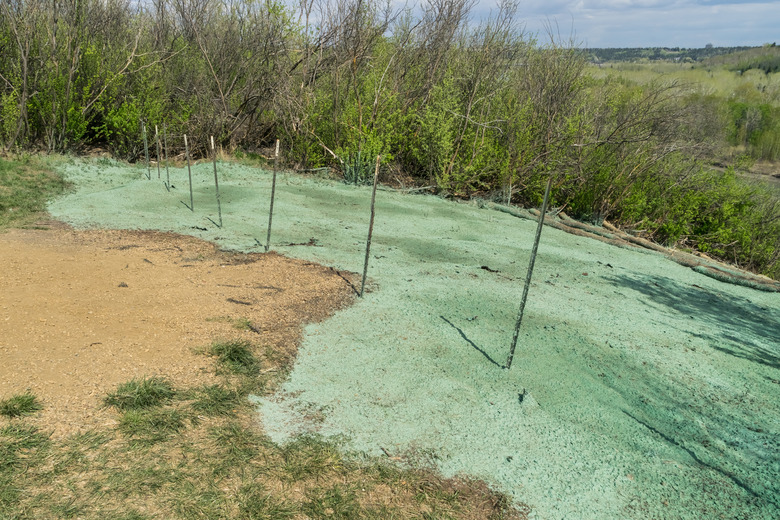Cons Of Hydroseeding
Hydroseeding is a high-tech one-step process for sowing a lawn. The International Association of Hydroseeding Professionals notes that this process incorporates seeding, fertilizing, hydromulching and watering in one step over the area to be seeded. This area may be your personal front lawn, or it may be a steep, rocky slope in a national park. Proponents of the technique say it's the most effective way to re-vegetate an area, but the disadvantages of hydroseeding typically outweigh the advantages for the average homeowner.
Hydroseeding Cost Drawback
Hydroseeding cost is expensive, because the sprayer needed to perform this task is prohibitively costly to own and operate. This method is not something you're going to be able to undertake on your own. Instead, you'll need to hire a hydroseeding company to do it for you.
High Water Use for Hydroseeding
Hydroseeding requires an excessive amount of water. Not only does the seed application method itself call for a lot of water, but hydroseeding technicians will tell you to water your newly hydroseeded lawn up to two to three times per day. The Michigan State University Extension explains that hydroseeding doesn't always result in good seed-to-soil contact. Because of this, the seeds are prone to drying out, and they cannot germinate if that happens.
Hydroseeding Lawn Establishment Delays
Unlike sod laying, hydroseeding won't give you a lawn overnight. Most grass types won't really begin to fill in for at least 3 to 4 weeks. It can take up to 8 weeks for strong visible growth to really kick in. What's more, the complex equipment needed for hydroseeding is susceptible to mechanical problems, which can cause additional delays.
Hydroseeding Prep Precision
A successful hydroseeding depends on many picky details. You'll need to prepare your lawn soil ahead of time according to the hydroseeding technician's instructions. The application needs to take place just prior to the prime growing season for the particular grass seed used.
The seed mustn't stay in the hydroseeding machine for more than an hour, or else it may absorb too much water or become damaged by the fertilizer in the mix. The mix has to be just right to avoid fertilizer burn or inhibiting grass growth with too much mulch.
Hydroseeding Clashing Colors Aesthetic
The hydroseeding mixture incorporates a dye that helps the technician spot which lawn areas have received treatment and which are yet to be treated. Its bright, unnatural green color is easy to spot from far away–or far above, as it was originally added to help pilots know where to spray next. It will fade on its own in as few as 2 days, but until then, you'll have a very tacky looking lawn.
Hydroseeding Environmental Impact
Hydroseeding isn't just used in urban settings. It's also used wherever erosion and landslides are a concern. One such case occurred in Laguna Beach, Calif., where a fire burned away thousands of acres of sage scrub and grassland in October 1993. Large scale hydroseeding was applied to re-vegetate the steep slopes in the burned area.
Unfortunately, this process had a terrible effect on local plant life. The hydroseeding mixture crusted over and smothered whatever existing flora it hadn't actually washed off the cliffs, including the state-protected endangered species Dudleya stolonifera.
